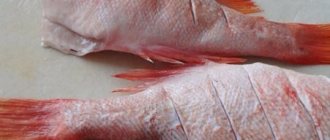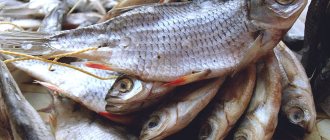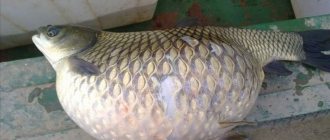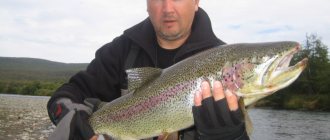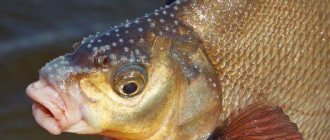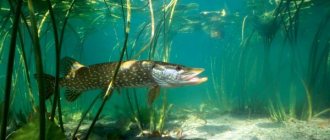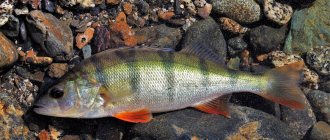Rolls, sashimi or sushi – all these dishes are very popular today. And raw or marinated fish is used to prepare many types of Japanese dishes. The taste of sushi or sashimi is very pleasant, which contributes to the growing popularity of themed restaurants in different cities of the country. But such delicacies can be dangerous to human health, since freshwater and sea fish can be infected with helminths. Worms in seafood are usually in the larval stage. Some species are completely harmless to humans, but there are also those that can cause serious harm to health.
The danger of fish helminths for humans
Many helminthic infestations from fish enter the human body and continue to parasitize there.
Doctors also identify the following problems that can be caused by worm infection:
- Cases of developing genitourinary infections as a result of damage to the body by worms are not uncommon.
- Due to helminth infection, disorders of the nervous system are often diagnosed.
- If there are a lot of worms and they gather in the intestines into a dense ball, the intestinal wall becomes clogged.
- Another common negative consequence is appendicitis. This problem requires urgent surgery.
- It is possible to develop a deficiency of vitamin B12, since fish worms have the ability to absorb it very quickly.
- Massive infection with worms and an increase in their population has a strong toxic effect on the body and can even lead to death.
How does helminth infection occur?
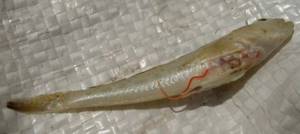
Parasite eggs attach to the stomach. Thanks to the presence of a sticky substance, they cling securely, and it is quite difficult to tear them off the fish. This makes the likelihood of infection high.
There is only one method of infection - eating fish infected with parasites that has undergone poor quality or insufficient heat treatment. Most often, the problem can occur when consuming the following types:
Sea fish contain worms. Mostly, the inhabitants of the seas are infected with anisakid larvae. Therefore, when eating such products, it is very important that they undergo high-quality heat treatment or are frozen at low temperatures before consumption. Of course, the taste changes when frozen, but safety is more important.
Worms in aquarium fish
Aquarium fish also suffer from worms.
Methods of infection:
- Through live food.
- From untreated water.
- From new, acquired fish.
Prevention:
- Live food must be kept in water for several days for the parasites to come out naturally.
- Clean the water thoroughly before adding it to the fish.
- Keep new fish in quarantine for 2-3 weeks.
Aquarium fish worms are not dangerous to humans. The temperature of our body is detrimental to parasites of aquarium fish. And they are not eaten. To prevent infection, it is enough to wash your hands with soap after various manipulations with the aquarium.
Don't be careless! Follow all the recommendations listed in the article.
Parasites in fish - photos of the most popular species and name
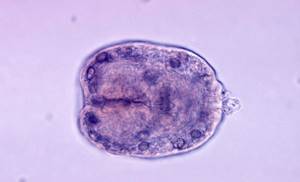
There are different types of worms in fish. Some of them are completely safe for humans, but others can cause great harm to health. The most common among those dangerous to humans are:
- Echinococcus is a tapeworm type, small in length. They are able to live in the human body only in an intermediate form.
- Siberian fluke - the shape of the helminth is flat, the length is a maximum of 12 mm. Mainly helminths live in river species. When it enters the human body, it causes the disease opisthorchiasis.
- Wide tapeworm - settles in the intestines in the form of a larva, which gradually grows. This parasite can reach a length of 12 meters. In case of infection with this type of helminths, people have one or two parasites. But in medical practice there have been cases where a significantly larger number of worms were diagnosed.
- Nanophyetosis is a small yellow-gray nematode.
- Trematode is a helminthic infestation 2.5 cm long.
- Anisakids are among the most dangerous worms that parasitize fish.
There are types of helminthic infestations that do not harm human health and condition. These include:
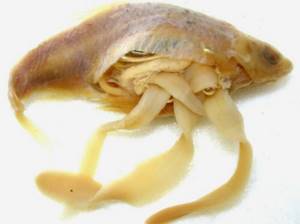
- Pilometra are red worms that can reach 20 cm in length. It usually lives in the pockets of the scales, so that when the fish is thoroughly cleaned, the worms are removed and the product becomes suitable for consumption.
- Diplostomas - such parasites choose a location near the eyes. The larvae are visible to the naked eye. They pose no danger to humans.
- Ligula or Ligula ordinary - refers to tapeworms that infect the body of fish. There is no danger to humans from such parasites. The main purpose of the helminth is to enter the stomach of birds that feed on fish. There the larvae grow and lay eggs, which the bird then spreads over the sea through excrement. Birds also do not suffer from this type of worms.
- Posthodiplostomum minimum is a tapeworm that parasitizes fish. The main hosts are considered to be birds and amphibians; it is not dangerous to humans.
Eustrongylides species
Eustrongylides parasites are located in the muscles, “free” in the body cavity, encapsulated in the liver and other organs, outside the intestines of fish. These nematodes infect a variety of fish species, including Yellow Perch, Sunfish, Fundulus, Guppies, Panfish, Danios and Angelfish. Typically, infected fish will have a swollen abdomen, as the worms often migrate into the abdominal cavity from the intestines and become very large.
Eustrongylides are usually very long, coiled and red in color due to hemoglobin. Often the host has more than one worm concentrated in the abdominal cavity (Figure 11). If a fish carrying the worm is eaten by another fish, the parasite can migrate to the muscles and other organs of the new host. In muscle tissue, the nematode causes larval-like lesions.

Figure 11. Several Eustrongylides nematodes with a typical coiled body arrangement and red coloration. Extracted from the abdominal cavity of a fish (scale in centimeters above and inches below)
Eustrongylides species have complex, indirect life cycles. Adult Eustrongylides tubifex and other Eustrongylides nematodes are present inside piscivorous birds. The eggs are carried by birds into ponds, where they develop into a form that is eaten by oligochaete worms (tubifex). Inside the tubifex, the nematode enters the third stage, known as "L3", which is capable of infecting fish. Once a fish eats a tubifex with the parasite at the "L3" stage, it migrates into the abdominal cavity and often to the outer surface of internal organs, such as the liver.
Some studies, however, suggest that Eustrongylides ignotus, a close relative of Eustrongylides tubifex, is commonly found in mosquito larvae and is able to complete its life cycle without a tubifex (Coyner, Spalding, and Forrester 2003).
The eggs of all Eustrongylides species are very strong and last a long time in the pond. At a temperature of 25°C, the time from the moment the parasite enters the bird until the fish in the pond is infected is three to four and a half months. Thus, after sterilizing a reservoir and infecting it through the mediation of fish-eating birds, the farmer may not notice the presence of the parasite until the start of fish collection, 3-4 months later. After 3-4 months the fish. Fish raised in a pond, in the presence of fish-eating birds, are even more susceptible to infection because the number of nematodes increases over time.
Diagnostics
Because Eustrongylides species infect areas outside the gastrointestinal tract of fish, the only diagnostic method is to kill and test a small representative group of fish. During necropsy, parasites such as E. tubifex are easily identified inside the fish. It is encapsulated in the mesodermal layer in the abdominal cavity or muscles, has a red color and a relatively long body (11-83 mm). However, there are several nematodes that look similar and correct identification can only be done by a specialist.
Treatment
Mechanical removal of the worm is effective, but culling of infected fish is recommended.
Prevention
Removing fish-eating birds or any intermediate hosts (tubifex and other oligochaetes) will help reduce the likelihood of infection. Sanitizing the reservoir will help get rid of any intermediate host. Twice annual sanitary treatment of the reservoir is recommended.
Determining the presence of parasites in fish
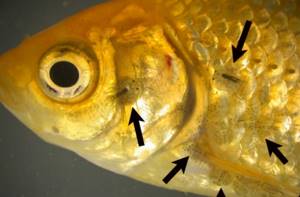
Most worms in fish can be seen with the naked eye. Even small-sized helminthic infestations cannot hide from the housewife’s gaze when cutting up the product. If necessary, photos that are presented on many resources will help you study worms in fish.
But it is very difficult to find worm larvae in the product. This is usually only possible through laboratory testing.
If you find helminths in fish, you should not eat such a product. If worms are not found when cleaning sea or river fish, this does not eliminate the need for high-quality heat treatment of the product.
How to distinguish infected fish?
There are times when worms in fish are easy to detect. During cutting, mature individuals or large larvae are visible to the naked eye. In such situations, there is no doubt that the fish is infected.
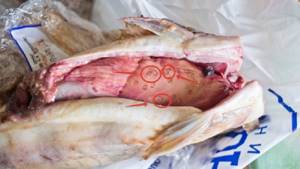
It is important to be able to distinguish normal fish from infected ones.
The appearance of the fish may indicate helminth infestation. If there are black spots on its surface, then this is a clear sign of infection. This description is especially typical for herring.
To identify contaminated fish, it is important to thoroughly inspect it before preparing and consuming it. You need to make sure that the internal organs and gills are clean and free of worms. Also pay attention to the fabrics.
Fishermen may also suspect that parasites live in fish while fishing. Such individuals have a special behavior - they float on the surface of the water, are lethargic, and also have a swollen belly. When you press on the belly of such a fish, a worm may appear.
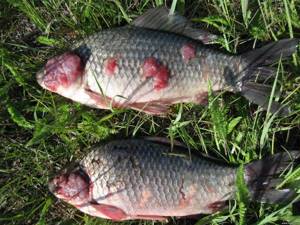
Fish with parasites can often be identified during fishing
If you find infected fish in a pond, you should not release it back. It is better to bury such an individual in a place where animals cannot reach.
The dangers of traditional fish products

Before blaming Japanese chefs for spreading raw fish dishes, it wouldn’t hurt to pay attention to Slavic cuisine. Herring is always present on our table. The affordable price and excellent taste of herring made the dish very popular. But it can be dangerous.
Yes, usually when salting all the parasites die. But this statement is true only if precise salting technology is followed. But it is not as simple as it might seem:
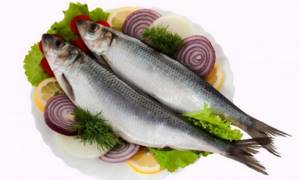
- After catching, the herring must be frozen. When frozen, the parasites die.
- After defrosting, the herring is salted.
While everyone knows about the need for salting, not many people know about freezing. Sometimes even manufacturers neglect this rule, since if it is followed, more time is spent on the product production process. In this regard, infection with worms from eating our usual and beloved herring is quite possible.

